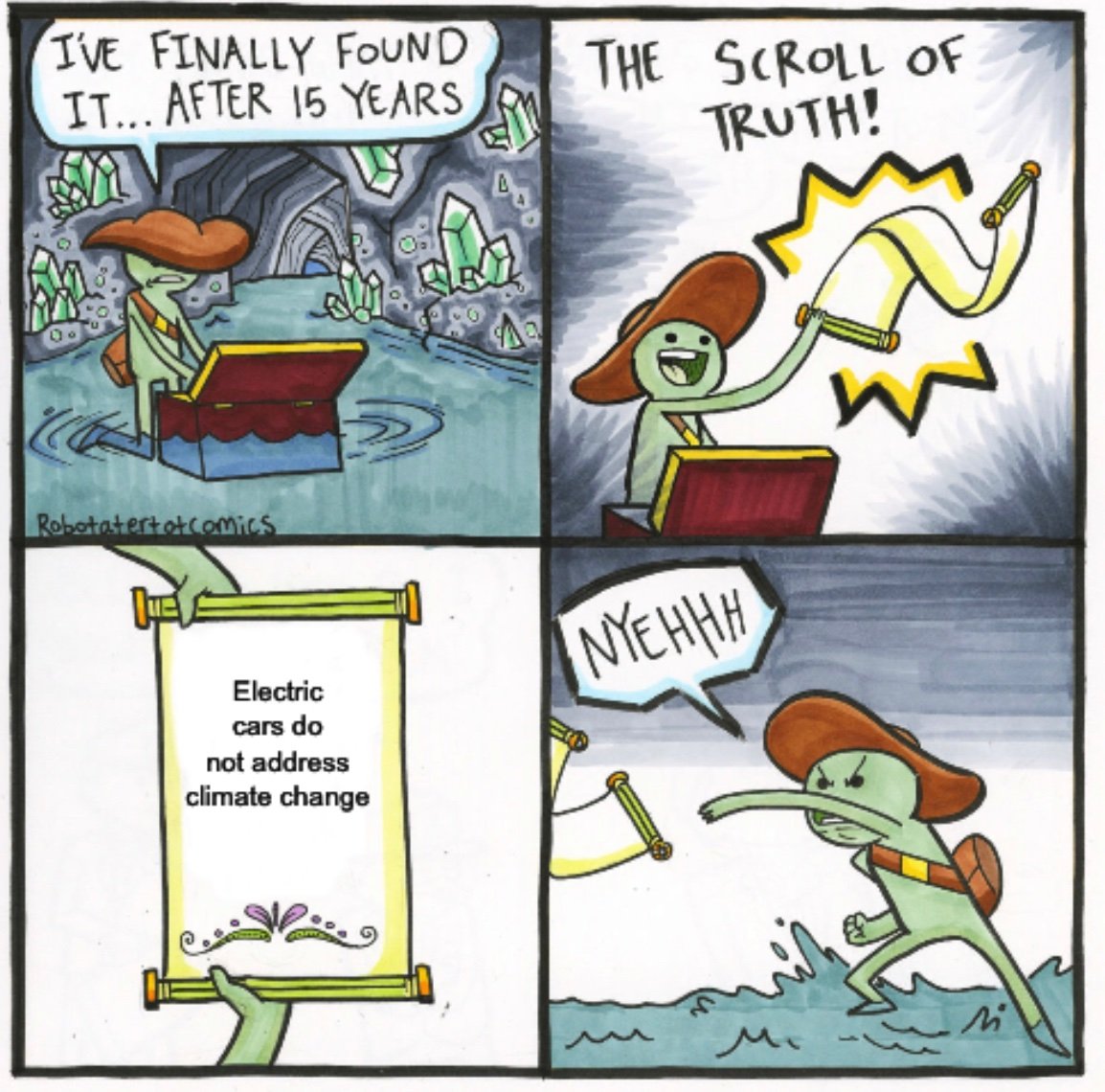Fuck Cars
A place to discuss problems of car centric infrastructure or how it hurts us all. Let's explore the bad world of Cars!
Rules
1. Be Civil
You may not agree on ideas, but please do not be needlessly rude or insulting to other people in this community.
2. No hate speech
Don't discriminate or disparage people on the basis of sex, gender, race, ethnicity, nationality, religion, or sexuality.
3. Don't harass people
Don't follow people you disagree with into multiple threads or into PMs to insult, disparage, or otherwise attack them. And certainly don't doxx any non-public figures.
4. Stay on topic
This community is about cars, their externalities in society, car-dependency, and solutions to these.
5. No reposts
Do not repost content that has already been posted in this community.
Moderator discretion will be used to judge reports with regard to the above rules.
Posting Guidelines
In the absence of a flair system on lemmy yet, let’s try to make it easier to scan through posts by type in here by using tags:
- [meta] for discussions/suggestions about this community itself
- [article] for news articles
- [blog] for any blog-style content
- [video] for video resources
- [academic] for academic studies and sources
- [discussion] for text post questions, rants, and/or discussions
- [meme] for memes
- [image] for any non-meme images
- [misc] for anything that doesn’t fall cleanly into any of the other categories
Recommended communities:
view the rest of the comments

The big thing is that you need to plan for end to end integration.
Walking > Bikes > E bikes > Trains > Busses > EV vehicles > ICE vehicles.
Most will likely be needed (e.g. someone needs to stock the inner city supermarkets, and you can't do that by bus), but we should be optimising for that whole chain.
First of all, I broadly agree with you. The following is meant to be a "yes, and," not a "no, but."
That statement has a car-centric assumption built in: in a properly-designed city, grocery shopping isn't necessarily done in "supermarkets" to begin with. Smaller stores, in turn, could be restocked via smaller vehicles.
You will still need shops, and they will still need stocking up. That means delivery access. Larger delivery vehicles are a lot more efficient, and so less are needed. You likely will always want a controlled way to get transit sized vans in and out. I would rather that was planned in, in a controlled manner, rather than left to big business, or bodge jobs. E.g. by back delivery roads. Underground would be perfect, but generally isn't viable.
You also need access for construction and maintenance.
Unfortunately, these requirements also make a vehicle centric model easy for cities, and so, by extension, car centric. Many places default to this. Finding a viable solution requires getting a balance (enough road access to keep places supplied, but good enough support and incentives to keep unnecessary cars out).
The idea that pedestrianized streets are always blocked off to literally everything (including emergency vehicles, construction vehicles, overnight deliveries, etc.) is a common misconception -- or strawman argument -- but it just isn't true. Lowering or removing a bollard for access by vehicles with a good reason to be there is an obvious no-brainer.
Yeah, and importantly, a lot of these deliveries can be done at night, when there are far fewer pedestrians around. And long-term, I bet things like local freight rail or cargo trams could be used to deliver to larger, higher throughput stores: